News
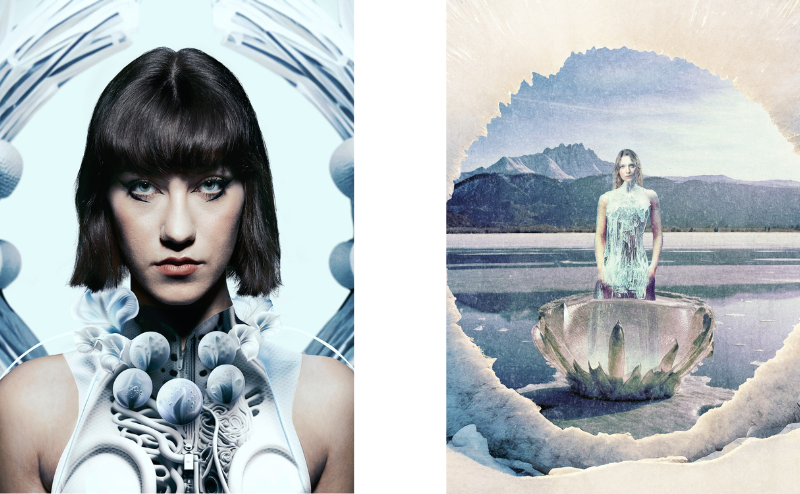
AI: what's at stake for image creators?
In the news over the past few months, creative AI has become as fascinating as it is worrying for image professionals. How can we work with AI, and what are its limits and pitfalls? What is the impact of AI on the notion of copyright? All these questions were addressed at the second round table of the GOBELINS Alumni network, organized in collaboration with ANI (Association Nationale des Iconographes). The event was moderated by Laetitia Guillemin (Iconographer, ANI Co-President and teacher at GOBELINS Paris), with the participation of Alice Cedolin, Lawyer at Saif (Société des Auteurs des arts visuels et de l'Image Fixe), Gilles Courtinat, Journalist, Albertine Meunier, Digital Artist, Yann Philippe, Managing Director of FLOWIM Studio, lecturer at GOBELINS Paris and alumni (Photography - Post-production, class of 2009) and David Raichman, Executive Creative Director, Ogilvy Paris.
What is the place of the author in the generative arts?
Yann Philippe, a lecturer at GOBELINS Paris, gave an account of a workshop held with students in the Bachelor Photographe et Vidéaste program.
The aim was to enable students to familiarize themselves with AI while retaining their place and role as creators. They mixed real photographs with AI-generated elements to create photo compositing.
"The result showed that some students tried to bend the AI's neck to keep their creative will, while others let themselves be led by the nose.It was the AI that directed their creation."
Yann Philippe
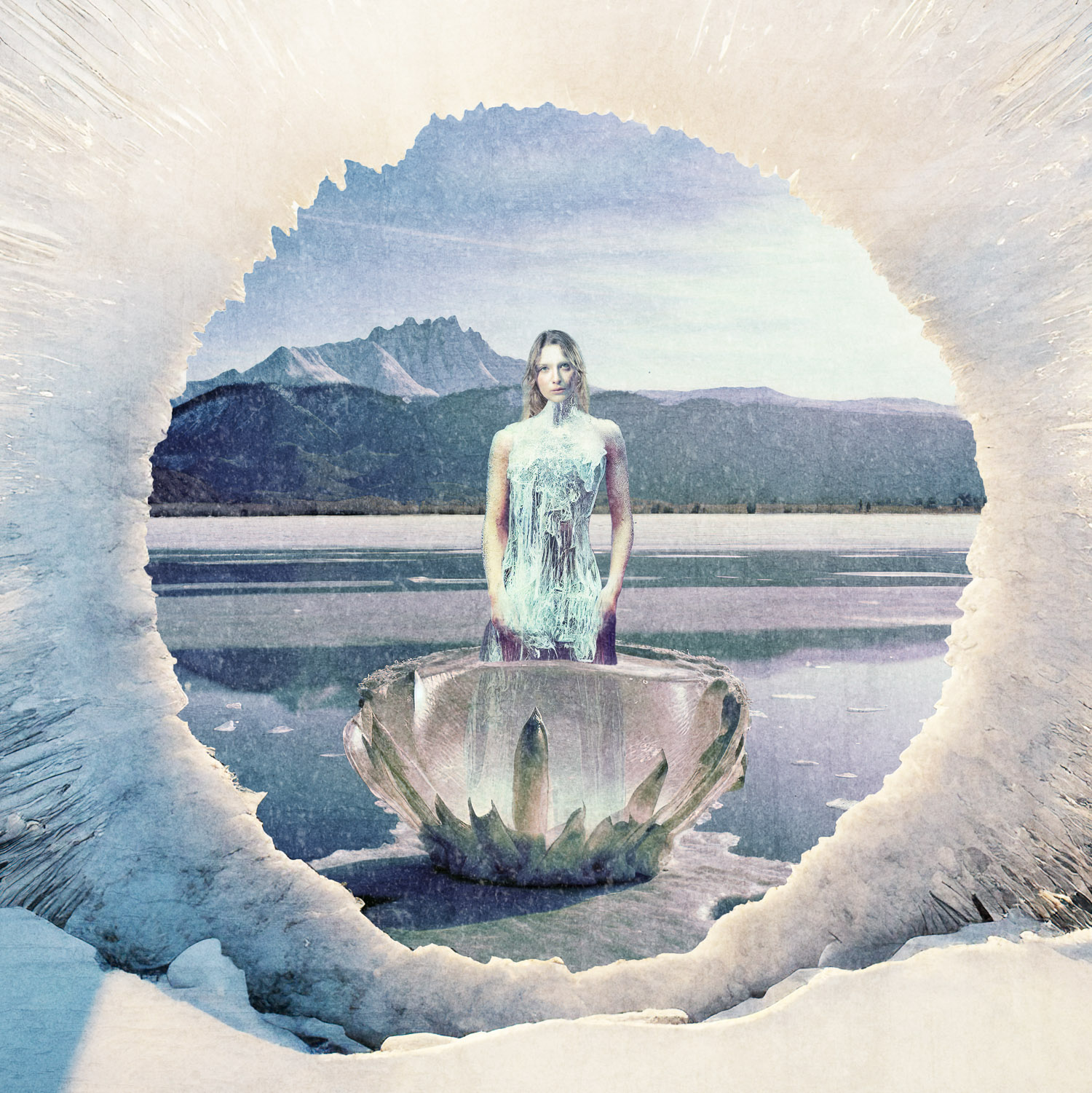
Femme de l'hiver by Nina Duhau, photograph taken as part of Yann Philippe's workshop on AI tools.
Generative AI as artistic practice: a curatorial task?
For digital artist Albertine Meunier, the challenge when using AI tools is not to modify the generated image, but to use it in its raw state, as produced by the prompt.
It's more a question of communicating with the computer, the challenge being to formulate the most appropriate prompt possible to produce an interesting image. The whole artistic process, then, lies in the writing of the prompt rather than in the visual creation itself.
"The difficulty with AI is to make it an artistic gesture, and today the challenge for artists is rather the one; how to integrate one's practice with these tools, how to confront them, how to collaborate, how to fight? "
Albertine Meunier
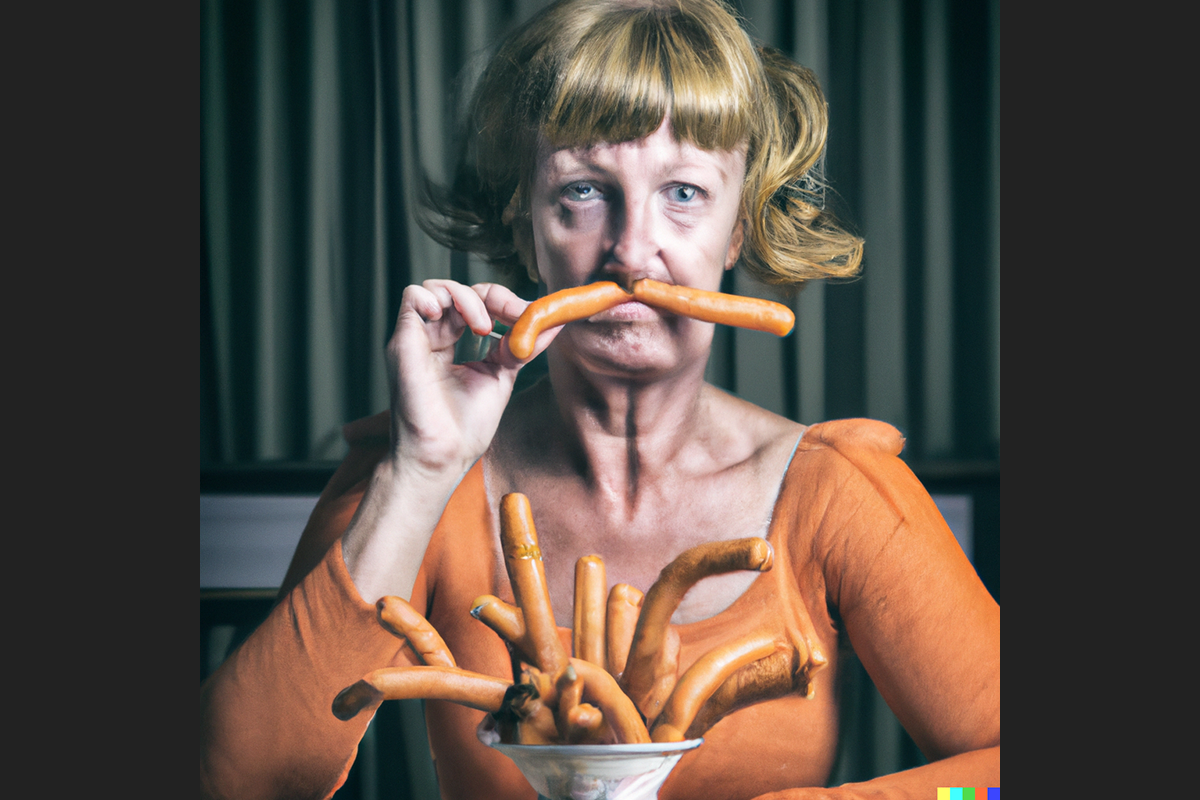
HyperChips, a series created by Albertine Meunier with DALL.E based on the brief: "albertine meunier mange des saucisses et des frites" ("albertine meunier eats sausages and French fries" ).
How have communications agencies approached AI?
For David Raichman, Executive Creative Director at Ogilvy Paris, AI makes it possible to respond to very precise orders, which are not necessarily easy to find in image banks. It also offers the possibility of adapting advertising content to the constraints of certain countries (on alcohol in particular).
According to David Raichman, AIs have become a direct competitor not only to the art director/editor duo , but also to dubbing actors, models and photographers.
"The whole economy needs to be rethought and the use of AI needs to be mentioned, as is already the case with retouched images."
David Raichman
AI also has an impact on the creative product. It has become part of pop culture, enabling advertisers to appropriate it and hijack it to get a message across, as in Ogilvy's campaign for the Red Cross, in which prompts were used to describe real photos.
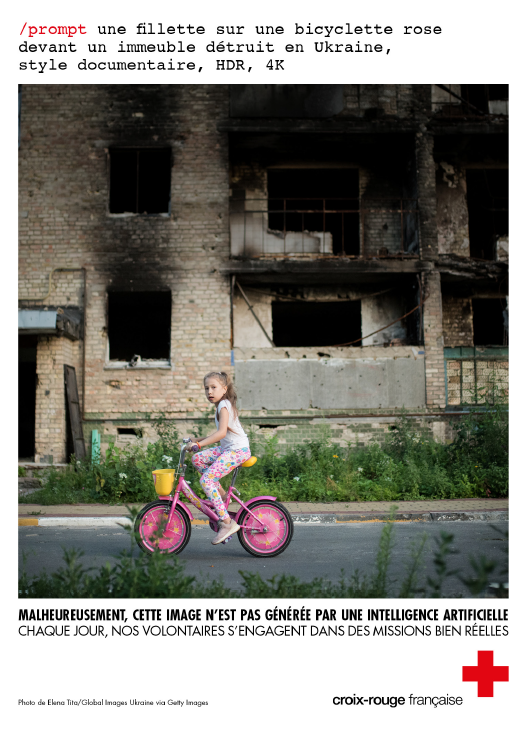
Campaign created by Ogilvy Paris for the French Red Cross
AI and photojournalism: what are the limits and dangers of AI vis-a-vis representations and information?
For journalist Gilles Courtinat, the use of AI in design poses two problems: the generation of stereotyped images, and the fraudulent use of the images created.
For AI to establish a connection between text and images, the latter have to be indexed by hand, so the risk is that the machine will reproduce any stereotypes it has been fed.
"From the moment there is human intervention, the interpretation that can be made of these images will vary according to historical and cultural criteria."
Gilles Courtinat.
There are several solutions, the first of which is to create databases and teams that are diversified (in terms of ethnic origin, age, gender...). The second would be to systematically and massively verify image annotations before they are integrated into AI learning.
According to Gilles Courtinat, AI performance in terms of photorealism is also problematic.
"We're going to reach a point where the difference between a classically produced image and one made by an AI will no longer be detectable."
Gilles Courtinat
This porosity can therefore lead to the dissemination of fake news, but also to the questioning of real images.

Image created with AI tools by @cirquedukitsh
Who owns the images generated by AI?
"Generative AIs are shaking up the fundamental principles of copyright, as it protects creations of original form, which bear the imprint of their author's personality."
Alice Cedolin
For Alice Cedolin, legal expert at SAIF, the use of generative AI raises several questions:
Who is the author of an AI-generated image? Does an AI-generated image constitute a work of the mind within the meaning of copyright law? Do content-generating AIs infringe works protected by copyright?
Several avenues have been explored to answer these questions:
- Consider that the computer is the author. The U.S. Copyright Court has ruled against this hypothesis.
- Considering that the designer of the AI is the author, as decided by a Chinese court. This solution is not ideal, as thousands of creations can be generated by a tool without it being possible to trace them.
- Considering the user as the author, on the assumption that the computer receives a command to create content.
In conclusion
"Generative AI will open up exciting new creative perspectives for designers, artists and image professionals, and by working with it responsibly and ethically we'll be able to take advantage of its benefits while preserving the value of our human creativity."
Yann Philipe
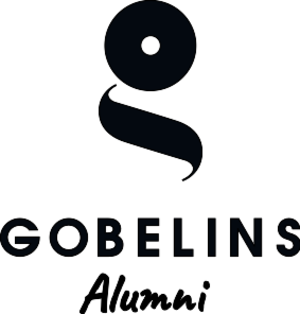








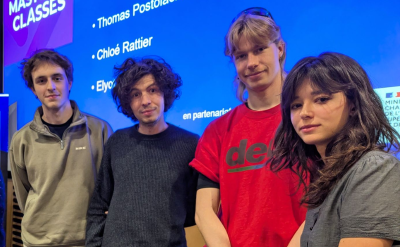
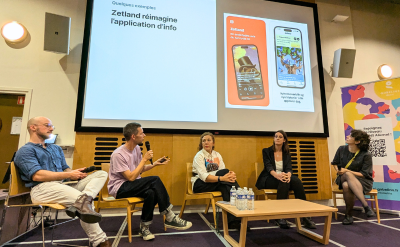
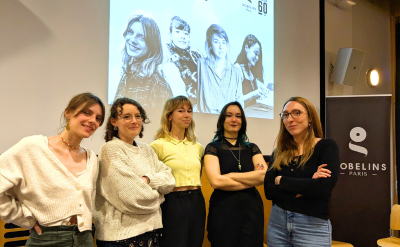

No comment
Log in to post comment. Log in.